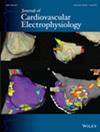Clinical Impact of the Incision of the Capsule Floor During Generator Replacement on Cardiac Implantable Electronic Device Infection Risk: A Single-Center Experience
Abstract
Introduction
The fibrous capsule around cardiac implantable electronic device (CIED) generators represents avascular tissue that could be colonized and provides the nidus for latent infection. The purpose of the study is to evaluate the effects of incision of the capsule floor at the lower and/or medial part at the time of generator replacement on the CIED infection and hematoma formation.
Methods
This observational study with retrospective analysis of prospectively collected data included patients who underwent CIED generator replacement between January 2013 and January 2024. A total of 1059 consecutive patients were compared according to the incision of the capsule floor at the lower and/or medial part: 448 patients without (group 1) and 611 patients with an incision on the capsule floor (group 2).
Results
Fifteen patients with CIED infection after generator replacement were identified. There were no significant differences between the two groups, except for a higher percentage of patients with number of previous procedures on pocket ≥ 2 (35% vs. 19.6%, p < 0.001), and NOAC use (10.6% vs. 6.7%, p = 0.027) in group 2. There was a lower infection rate in group 2 compared to group 1 (0.7% vs. 2.5%, p = 0.014). In multivariate analysis, independent predictors of CIED infection after generator replacement were replacement without an incision of the capsule floor (OR 4.384, 95% CI [1.355–14.189]; p = 0.014), and age< 65 years (OR 3.259, 95% CI [1.133–9.378]; p = 0.028).
Conclusion
Generator replacement without incision of the capsule floor during generator replacement was associated with increased CIED infection risk. To minimize CIED infection risk, capsule floor incision could be considered during generator replacement.


 求助内容:
求助内容: 应助结果提醒方式:
应助结果提醒方式:


